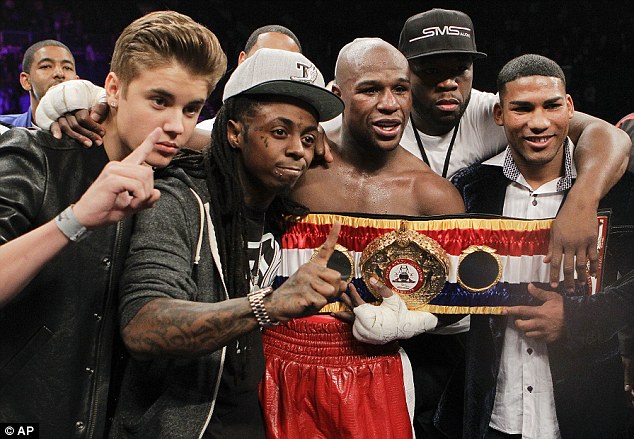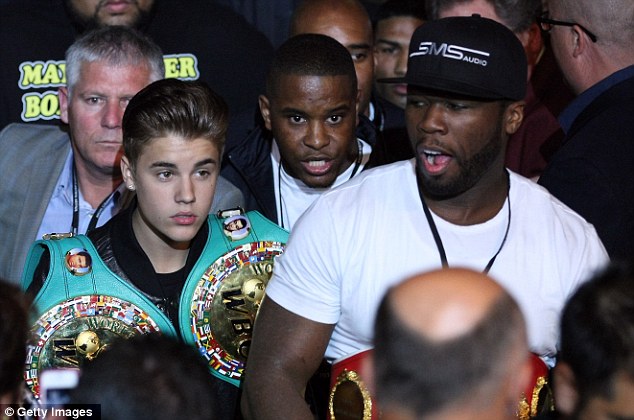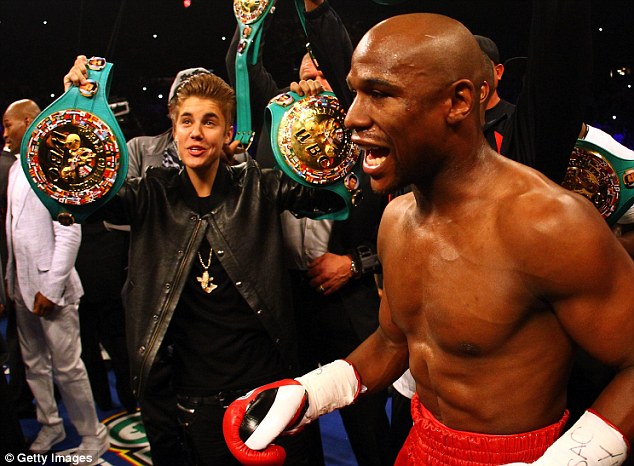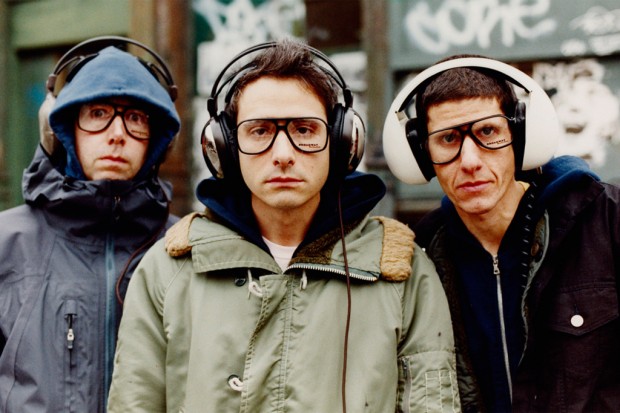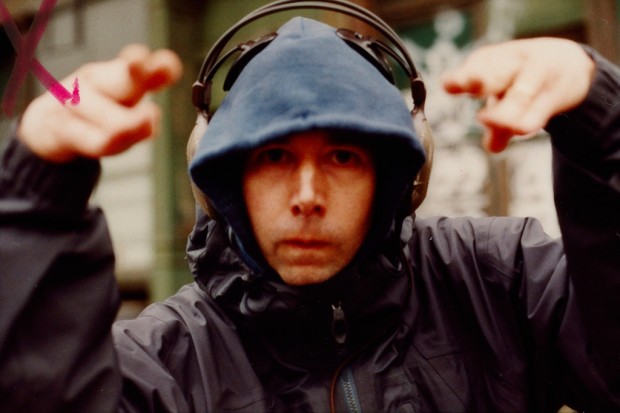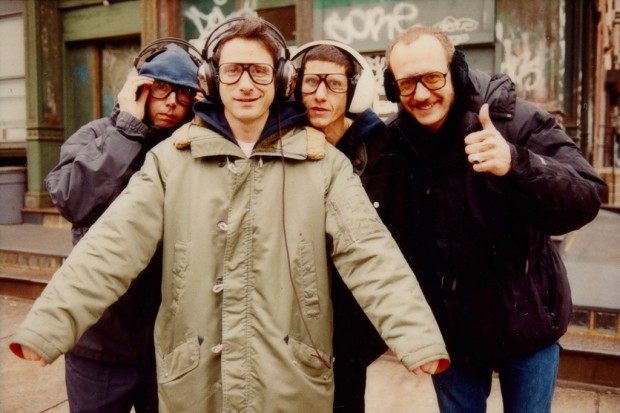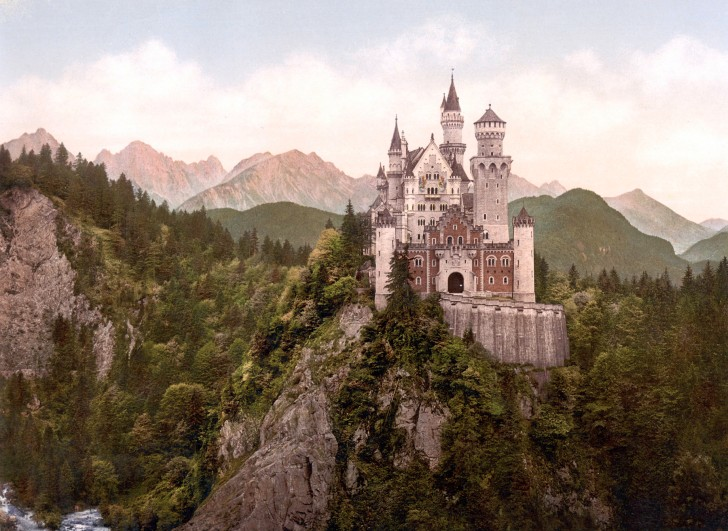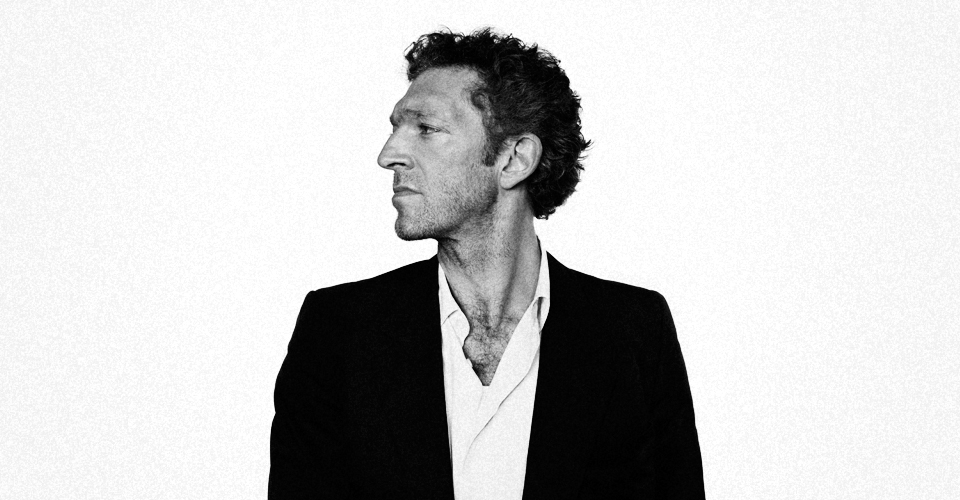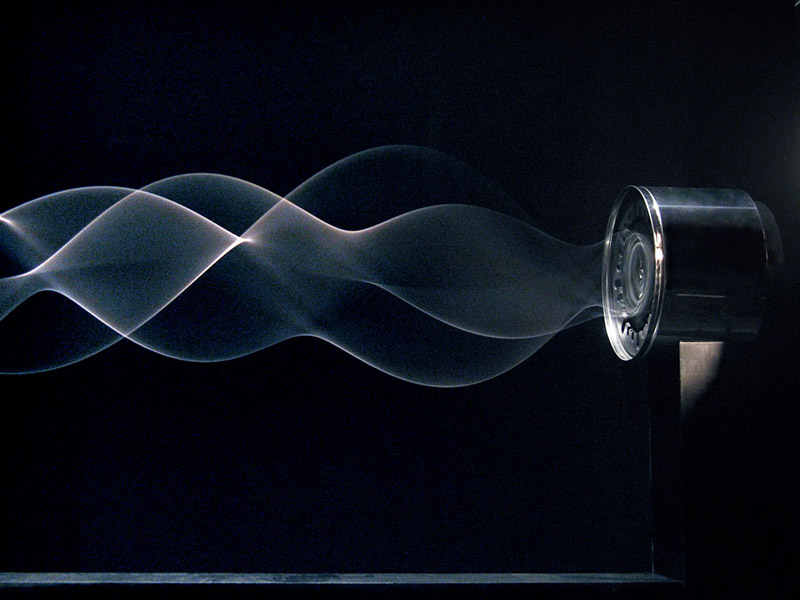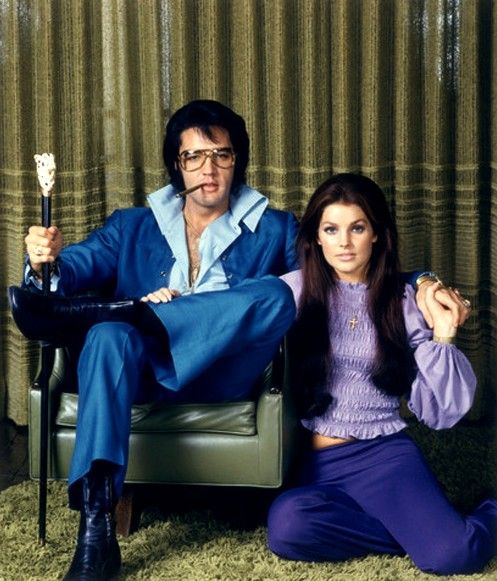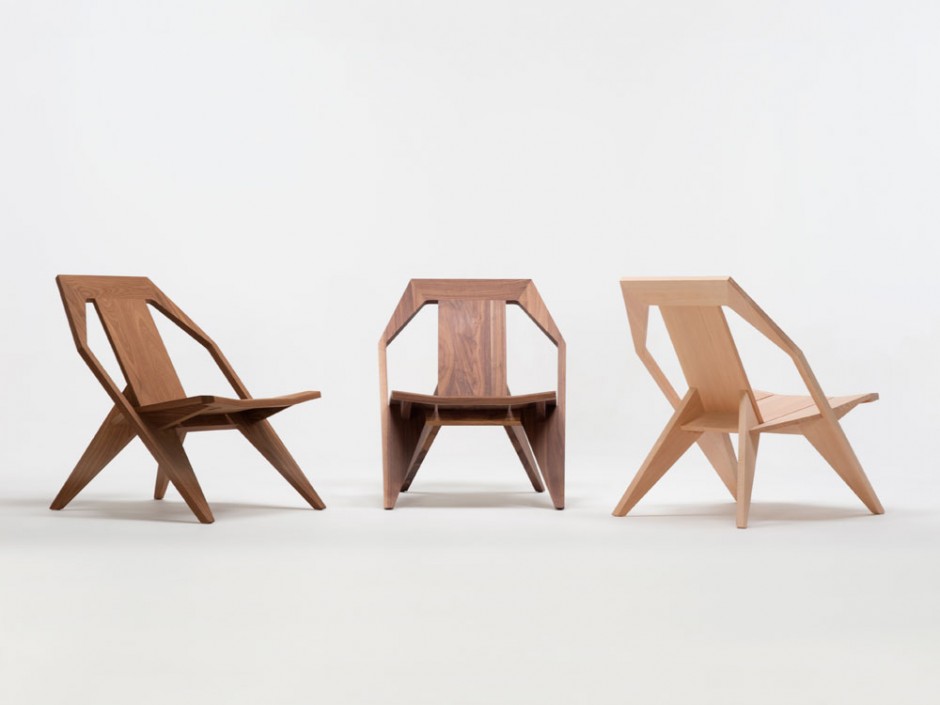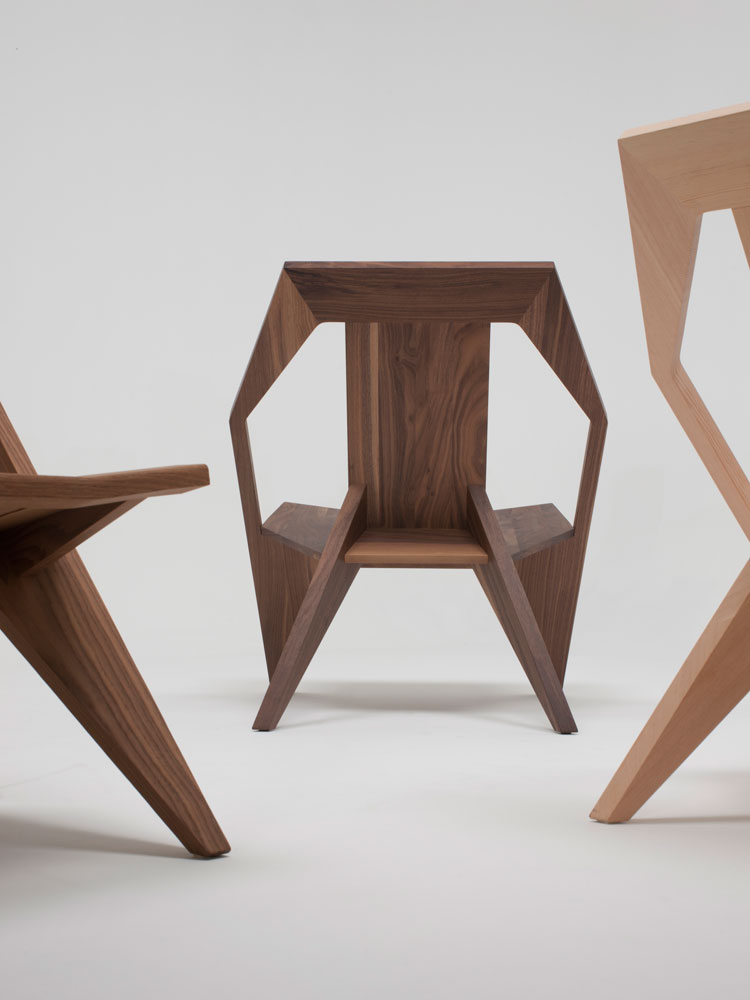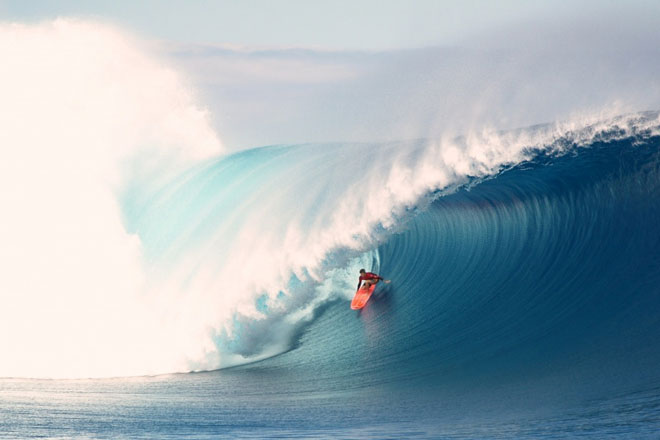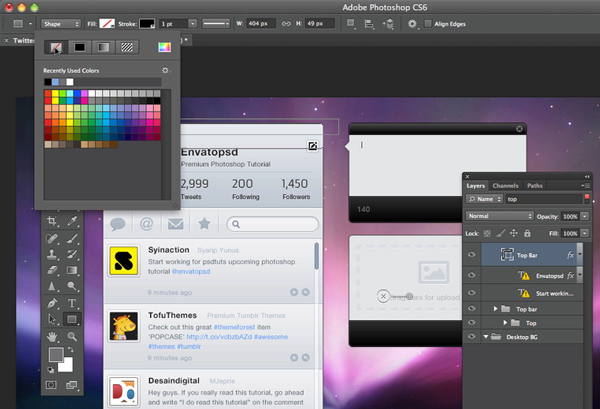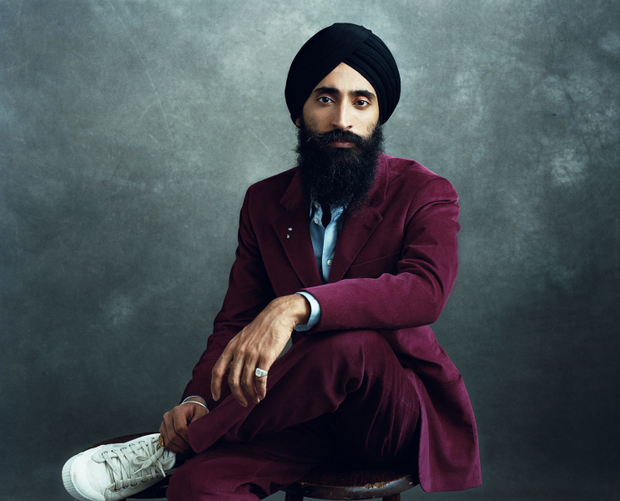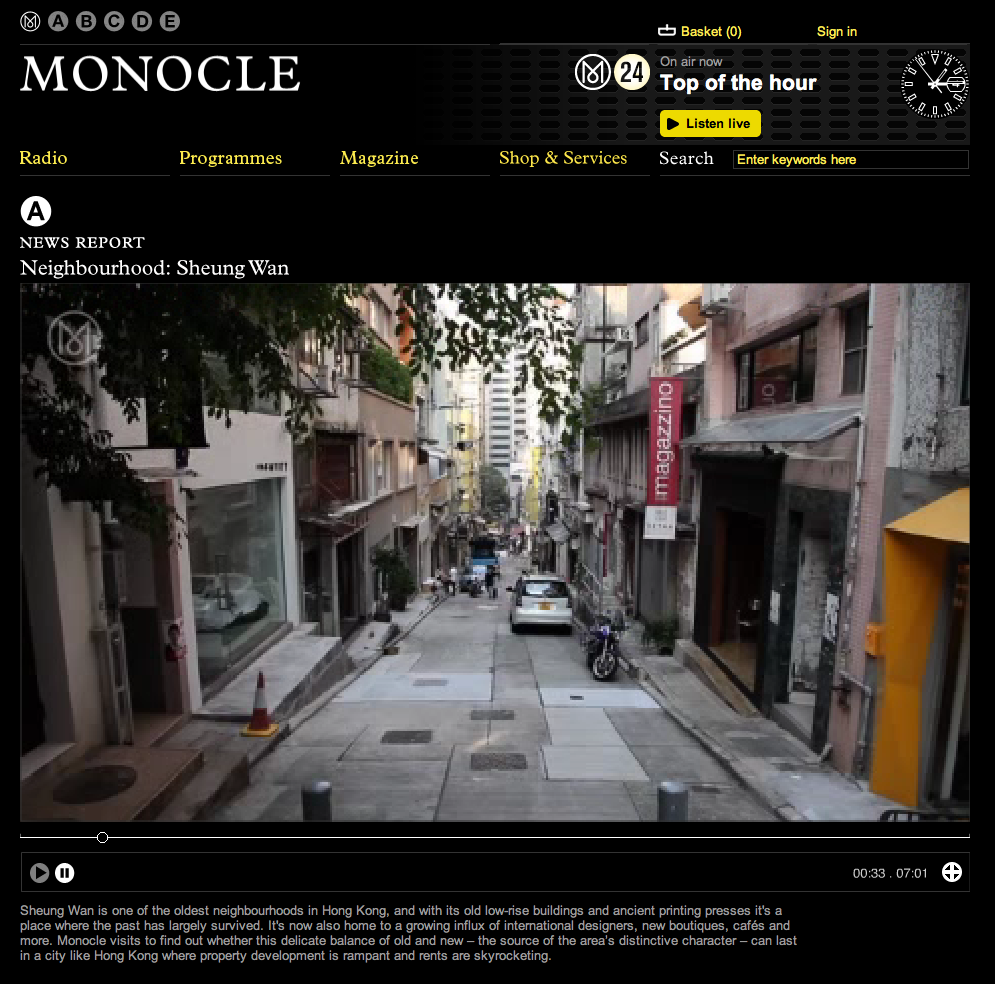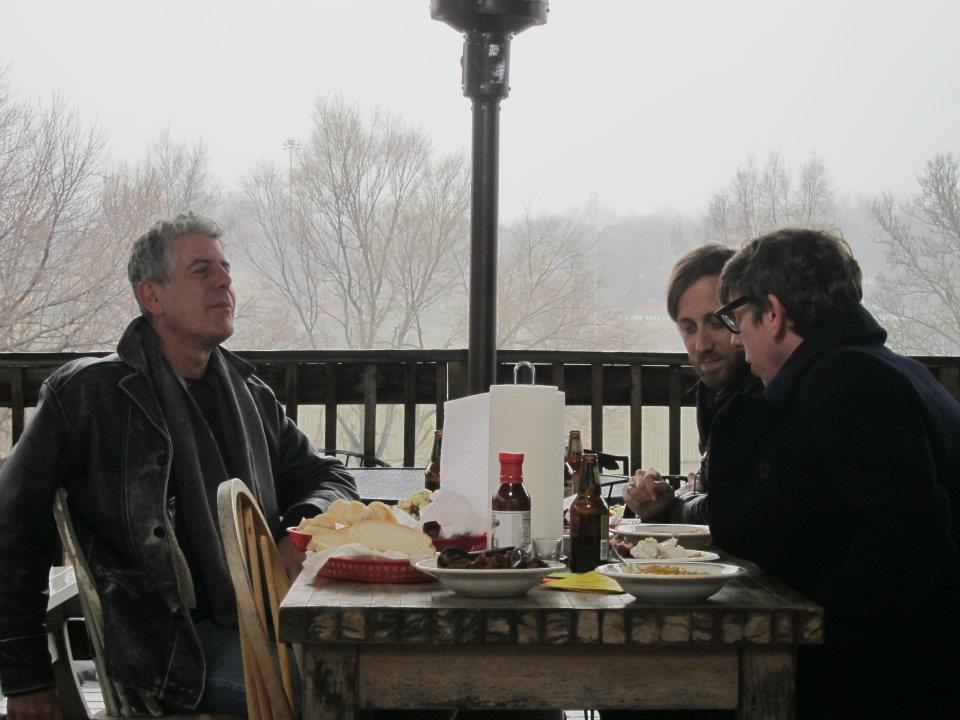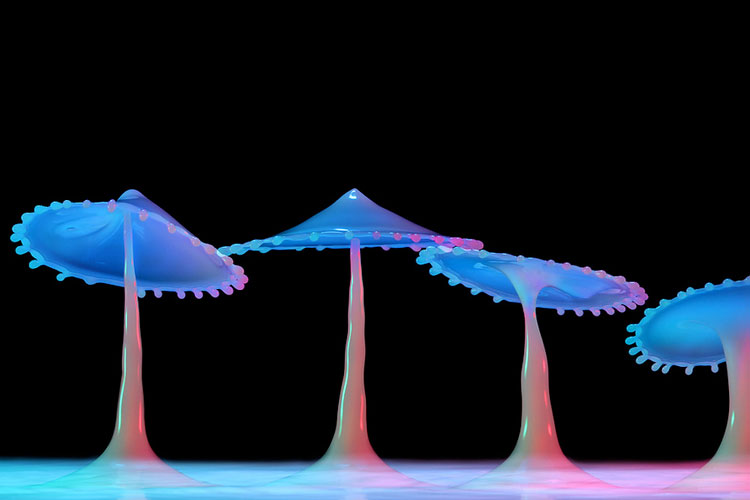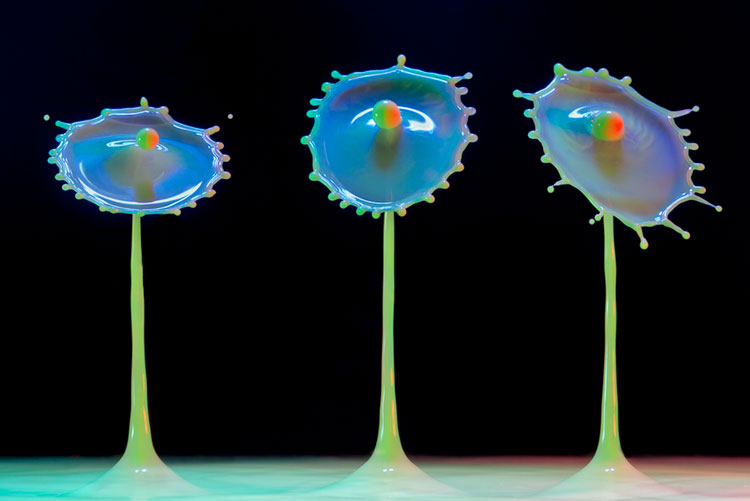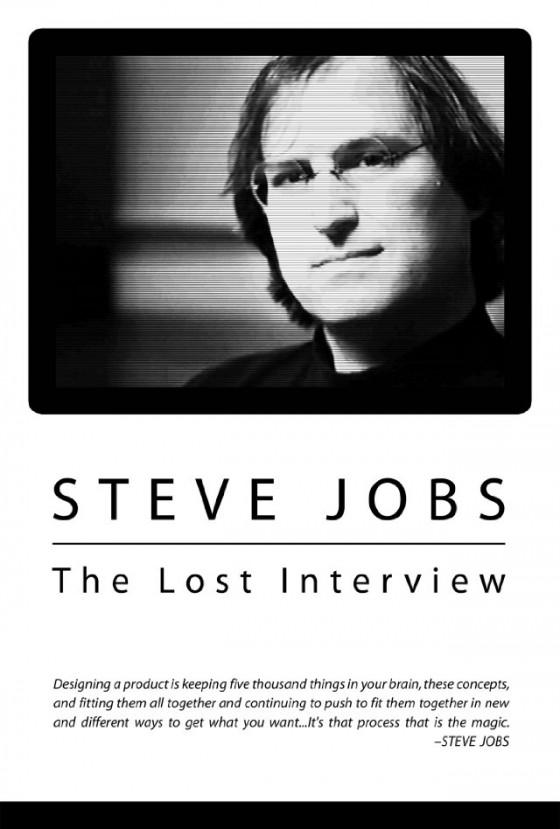Author Archives: Luke Norris
Justin Bieber joins 50 Cent and Lil Wayne as guests of honour as Floyd Mayweather beats Miguel Cotto
Daily Mail UK –
Justin Bieber cemented his status as the world’s greatest teenager last night. Clearly being a platinum selling pop star with over 21 million Twitter followers isn’t enough for the young Canadian. The Boyfriend singer was the first person to congratulate Floyd Mayweather Jr as the pint sized boxer defeated Miguel Cotto, at the MGM Grand Garden Arena, in Las Vegas.
R.I.P. Adam MCA Yauch (1964 – 2012)
The Beastie Boys by Terry Richardson
In remembrance of Adam Yauch, photographer Terry Richardson has taken to his candid portfolio site to show off some shots of The Beastie Boys from his archive shot on Greenwich St. in New York City.
He will be sorely missed.
Wish I was here…
Anatomy of a Job Interview Infographic
This infographic provides solid and useful advice for the job applicant. While much of the information is common sense there are other bits that someone new to finding a job may not know such as: You should prepare 3 thought-provoking questions for the employer and never ask questions you can find by doing a Internet search. I really enjoyed the “not so common questions” section of the infographic. My favorite interview question in this area was, “How Would you Move Mount Fuji?” My answer would be one stone at at time.
VINCENT CASSEL: “KEEP THE MYSTERY ALIVE”
The Talks Interview –
Mr. Cassel, how come you always play such raw characters?
I guess because that’s what attracts me, really. Even when I watch people in real life. In French we call it à plusieurs couches.
Are you talking about multi-layered personalities?
Yes. The way people behave, the paradoxes, the contradictions. All these things we have to live with and still pretend that everything is only black or white. That, I think, is the most interesting thing in human nature. The fact that we have to do one thing and pretend something else. That’s when it becomes very interesting. If you can literally speak the way you feel, then it’s not interesting anymore. It’s when you have to lie that it becomes interesting.
Where do you think your interest in this comes from?
I don’t know, I started this career dreaming about Jean Gian Maria Volontè and Robert De Niro and they never really played nice, clean cut, crispy-clean kind of guys. They always played characters that were spiteful but at the same time fascinating. By the time I started to make movies that is the kind of thing that I chose. I think they’re just more interesting. And in a way I think they represent life better than heroes and the so-called good guys, really.
Speaking of De Niro, I once spoke to a director who had worked with him and he told me that there is something about De Niro, without him having to do anything at all, that scared him. I think people also have this kind of fear with you. Have you experienced that in the past?
Yeah, of course. When people see you doing those kinds of characters, then they don’t know. But it’s just acting and that’s fine. Plus, the mix of those two things keeps the mystery alive.
Is it easy to direct you? Do you argue with your directors?
No, no, no. I’m very confident with the director. If I say yes to a movie, it’s because the guy is fascinating in my eyes and I’m interested in the way he does things and I want to learn more. So yes, if I’m in the hands of somebody that I don’t trust then it’s going to be hard to direct me, but I never get into that position anymore. I do think it’s good when people never really know what your next move is going to be, whether you’re nice or not. I think it’s important for an actor to keep that thing. If you appear too much as yourself, if you talk too much about who you are, then people don’t care. They know you.
Do you feel that people also show off too much of themselves for the media, that the star is more important than the actor and they can’t disappear behind a role anymore?
It depends on who you are. Some people still manage to disappear. The problem is that the system is made in a way where it’s very hard to escape, you get trapped very easily. I used to be a little more rude. Every time somebody would talk to me about my wife or my kids I would just cut off. But then again, I’d rather be polite because you don’t have to be rude to people.
You seem to try to separate certain things from each other. Work and family. Even friends and family. Your wife Monica Bellucci once told me you don’t even have the same friends, which seems quite unusual.
But I think it’s pretty healthy. We have something in common – we do the same kind of business, but then, you know, to share the friends… I like it how we do it. I think it’s healthy – everybody has freedom, their own lives. If you stick together it’s not because you have to, it’s because you feel like it.
Talking about the freedom, is the constant travelling and not really living at one place part of that as well? Do you enjoy that?
I don’t know. We’re traveling a lot, it’s a way of living. It’s a little more expensive I have to say. But altogether it’s great to do these kind of things while you can, because after a certain point I guess you just stop because either you’re too old or your kids don’t want to move anymore. But right now that’s how we live. I love it actually. It definitely gives you a sense of freedom.
Did a search for freedom also influence your decision to become an actor?
The thing is that I really grew up on set and backstage and in theaters, so the minute I wanted to take control of my life, the easiest thing to project myself with was the stage, really. Not even movies at the time. It was more like: I could do this and show it. And that’s how I started. We had a show with my friends from the circus school and we would go and do it in the street. It was very immediate. It’s very easy, you don’t need money, you just need to train and just do it and if it’s good people stay and give you money, otherwise they just leave and whistle. So I don’t know, it was just the easiest thing for me to do.
I am sure back then the whistling was part of the game. But does is bother you if a movie is not successful nowadays?
A movie has to be different, unique, not something you’ve seen before. Yeah and then it’s interesting. Maybe it’s not box office wise a huge success, maybe some critics are not going to like it, or even hate it eventually, but at the end, as an audience, if you see something that doesn’t look like anything else, you didn’t waste your time.
With that attitude you’ve managed to be referred to as a big star of European cinema. Do you like that description?
I don’t mind it, you know. It’s not totally true, by the way. Maybe from an American point of view Europe is one big thing, but – as you know – Germany is very different from France, is very different from Italy. It’s not like that really. But I guess from that side of the Atlantic, it’s a vision. It’s a possible vision of what we do.
In comparisson to European cinema, US films are often labeled as too mainstream and two-dimensional, yet you’ve managed to show that there is much more to it by working with people like Aranofsky and Cronenberg.
First of all I think people have a tendency to confound American cinema and studio cinema, which is very different. I mean, Black Swan, the Darren Aronofsky movie, is not a typical American movie. If you want to make a long story short, I guess it’s very much about the end of the movie. If it’s a happy end, you know, it will be more American. If it’s not as clear who’s the bad guy, who’s the good person, then it’s a little more European (Laughs).
Waves by Daniel Palacios
A long piece of rope represents three dimensionally a series of waves floating in space, as well as producing sounds from the physical action of their movement: the rope which creates the volume also simultaneously creates the sound by cutting through the air, making up a single element.
Depending on how we may act in front of it, according to the number of observers and their movements, it will pass from a steady line without sound to chaotic shapes of irregular sounds (the more movement there is around the installation) through the different phases of sinusoidal waves and harmonic sounds.
But even though this could seem like a mere representation of what we can’t see for ourselves, beyond the persistence of vision, it connects with our most visceral side, combining the intangible beauty of the represented graphic with the brutality of the sound it produces, creating a hypnotic environment of audible results and unique visual stimulations.
More info at: danielpalacios.info
Conference of Cool.
MEDICI Chair by Konstantin Grcic for Mattiazzi
Mattiazzi make furniture in wood, using both traditional means of production and the newest digital production technologies. MEDICI was born on Mattiazzi’s factory floor. The chair was inspired by the material, the machinery and, of course, the skill and craftsmanship of the people we worked with.
Right from the beginning, I was looking for a distinct grammar for my design, a language that would express the characteristics of wood. I liked the idea of working with planks. They signify the very beginning of the production process – a tree trunk that is cut into slices. I like the way in which a carpenter joins wood. It is immediate and direct. The construction remains visible and easy to read. Structure turns into form.
MEDICI is a low chair with a comfortably reclined posture. Its generous dimensions give it an embracing confidence. The chair can be used as a solitary piece of furniture or in small groups, in private or public, both indoors and out. It is produced in three different woods: American walnut, Douglas fir, and thermo-treated ash, a wood that is suitable for outdoors. The Douglas fir version is available in natural as well as in yellow and grey stain.
Where Things Come From
Hardy Seiler’s finished Bachelor project – a short animated trailer for a fictional education tv-series.
Perfection
Introduction to Photoshop CS6
GQ Personal Style: Waris Ahluwalia
One of my favorite style kats.
GQ Magazine Article –
He describes his occupation simply as “adventurer”. The star of films by Wes Anderson and Luca Guadagnino as well as designer of jewellery and scarves for his own line House Of Waris, the supremely elegant Mr Ahluwalia is sitting in the restaurant of London’s Lanesborough hotel. He’s dressed in a vintage Def Leppard T-shirt, APC jeans and his signature rose-coloured Esquivel desert boots (turban, designer’s own). “I think I may be the youngest person in this hotel by 50 years – I love it,” he says with a smile. “I’m not looking for pretty girls to check me into my hotel room – I’m looking for 70-year-olds who remember me from my last visit.”
A thoroughly engaging raconteur with a keen eye for the absurdity of both the fashion and film worlds, the Punjab-born, Brooklyn-raised Ahluwalia enjoys perpetuating the myths about his upbringing: “I like to paint this picture of this little boy from India. I tell a story about taking a yak to the airport when we left the country. It wasn’t like that – my dad was a professor.” A regular on best-dressed lists the world over, he’s become so recognisable at New York society events that this year a friend spent over £300 on a fake beard and dressed as Ahluwalia for Halloween: “He’s decided his costume every year is going to be me dressed as someone else – last year it was ‘Waris as a cowboy’ and next he’s doing ‘Waris in space’ then ‘Waris as Karl‘.” In London for an Assouline party, here Ahluwalia discusses Europe’s best vintage-buying spots, his quest for authenticity and why you should never wear non-military dog tags…
I like old-world charm. My whole world revolves around making things from a bygone era relevant today. My mission in life is to preserve craftsmanship. I studied at the University of Manchester for a year and I deliberately chose the oldest hall where we had to wear gowns at tea time. I’m an American searching for some sort of parameters, a way of life – I’m looking for a slight formality, for a place where you can never be overdressed. If you’re the only guy in a suit, great!
I’m a traditionalist with suits. It doesn’t need extra pockets and I don’t want headphone jacks in my jacket. I appreciate designers who do different things but for me the most basic version of that item is what I want.
The obvious answer for prom is to wear a suit. But maybe you should pick a time period. So be formal in that time period – when someone says you’re not dressed correctly you can say, “But I am formal!”
I had a white suit made for me when I was graduating from sixth grade. But my first real fun experience with suits was during the filming of The Life Aquatic in Italy. Costume designer Milena Canonero had a tailor who had worked on Stanley Kubrick’s movies who was in his seventies or eighties. I had a simple, clean black suit – I was surprised how much better it was. Apparently my right arm twists a little bit different from my left arm – so I always have to wear bespoke now [laughs].
It’s not just the end product. It’s not just the doing, it’s the how. If you go to a store and buy a suit, it’s dull. I like there to be some interest in every element of my life. It’s picking fabrics and talking to the tailor. Your life is supposed to be filled with people from different worlds. Besides everything else, my jewellery and my scarves have brought into my life a printer from old Delhi, goldsmiths, stonecutters, embroiderers, weavers – all these people I have conversations with who from another part of the world, another time.
I would like to wear a leather jacket. But I don’t think I can until I start riding a motorcycle. Unless it’s real and authentic, I don’t feel comfortable with it. I feel that should be on a list of things that men should be able to do – like being able to ride a horse or put up a shelf.
My best-dressed British man is Patrick Grant. He loves what he does – he bought a suiting company so it’s more than a look: it’s his life. I normally go with Norton & Sons for bespoke. Two other men that stick out in my head are Hugo de Ferranti and Robin Hurlstone. Equal parts style and charm is a killer combo.
If there’s a black tie event, I’m there. I loved getting dressed up and I love bow ties – APC have made some good ones. I’ve got a whole different bunch of black-tie suits: an all-velvet one, a white one, one with a velvet collar, two with no velvet. There’s a beautiful dark blue one with mohair piping that Louis Vuittongave me. It’s spectacular.
I like wearing clothes made by friends. I think it’s a community and nothing less. If I have to wear and talk about clothes, I should be affecting the bottom line of someone who I care about. I like to vote with my dollar.
The best way to dress well on a budget is vintage. Resurrection in LA is a great store; it has great old T-shirts for men. You just go through the racks and it’s the luck of the draw. My favourite thing to do in Rome and Paris is to go to [flea markets] Porta Portese and Les Puces de Saint-Ouen respectively. I try and make sure I’m there on a Sunday. I always think about going early, but then I’m always out awfully late, but I eventually make it over there.
Why would anyone wear velvet during the day? Velvet is night. You’ve got to save certain things. Protocol is good. It’s nice having rules.
I love that you call it “fancy dress”. I bought a mask one Halloween. I’m a formal skeleton: black tie, black suit and a skull. It has a floppy scarecrow hat and a wig, it covers my whole face and I had a friend stitch fabric underneath it so it covered my beard. It was really warm. I don’t speak to anyone the whole night – I can’t eat and I can drink through a strawer. Nobody knows it is me. Sometimes I dance with them or stare at them from across the room and it creeps them out.
My grooming regime? Three maidens come and brush my hair and my beard! [laughs] It’s really simple: I have a beard brush (which is a key element), a hair brush, a nice Nars face lotion and Sponge skincare from Greece. Lisa Hoffman has an incredible line of travel-size products.
I didn’t reference these films in my look but I do have a certain affinity with David Niven in Around The World In 80 Days. Always sharp, whether on a train or at sea, and in every possible location, where everyone else is dishevelled. It was a pleasure to watch. Also Kris Kristofferson in Alice Doesn’t Live Here Anymore – he looks incredible in that movie.
Wes Anderson and I differ on style in that my trousers go down to my ankles. On set, he’s very specific: he knows what he wants and there is no discussion about style. There is a conversation and Milena is incredible – it’s a treat to work with her. But Wes is also someone who likes to enjoy his life and be comfortable so I don’t feel so guilty. If he wants to shoot a film that’s set on a train, he doesn’t want to do it in a studio. He wants to shoot it on a train, on the tracks, in India. He could do it for much less somewhere else. I want to live what I’m talking about. If I’m not doing it, let’s talk about something else. There’s no façade here.
As the hotel butler was packing, I saw my new boxers were in one suitcase. I was so excited about M&S underwear – I must have got 25-30 pairs yesterday when I was in Manchester. They are a great fit, their cotton’s really soft, they’re the perfect length and their prints are great – especially the gingham.
I’m someone who appreciates people who wear wild and crazy things. Particularly because it makes my look seem so stable, logical and clear. If people are asking, “What the heck was he wearing?” I’ll be thinking, “Great, do it!”
I think in general all men are not as well-dressed as they used to be. By comparison with other nationalities, Italy is still leading the way. Italian men love style – even if their mother’s still helping them tie their tie.
I did a tour of British heritage brands. I visited Swaine Adeney Brigg, which had beautiful stuff and I visited Lock & Co. I already have a hat though – my headgear is sorted. If not, I think I’d be wearing top hats. I can’t understand why they’re not coming back. Does someone [in the public eye] have to do it first? It would have to be someone in real life – not a character in a film. What I imagine is coming in to a room and passing my hat to someone with my gloves inside it. Everything is for that moment. Why wouldn’t you want to live like that?
I love to be pampered and touched. I don’t have any phobias or fears. Go ahead and measure me, put the lotion on my face, brush my hair. Nails I’ve got to do on my own – I don’t do manicures. I like the whole experience, the attention. I like to blame it on the fact I’m an only child. [laughs] It’s my fallback.
Bespoke is not an area in which you can really have “disasters”. If I’m in a new city I’ll try out a new tailor – if stuff doesn’t fit right you just don’t go back to them. It’s a hobby.
I want to know everything about what I consume. The idea of style or fashion is only interesting to me in how it relates to the people behind the work. I know who makes my shirt, T-shirts, socks, jeans and suit. There’s a consciousness to it. There’s a sense of going back to the old world where you had a separate butcher and baker – and you knew the eggs were hatched that day rather than sitting there for three weeks before you get to the store.
Handmade suits can live alongside the mass-made stuff. I’m not on a mission to ban mass production. It’s not my battle and I don’t really care. I’m not against technology – I’m not a luddite. I fly on planes. I use the internet. I sext. I just like to talk about “slow fashion”, like “slow food”, where things can just take a little bit longer.
In India everyone had their clothes tailor-made. It wasn’t a luxury. Now more and more the tailors are disappearing because everyone wants ready-to-wear and things that don’t actually fit them as well because there’s a brand on them or logo on it. It’s funny to watch that happen. The rest of the world is trying to go towards natural fibres and they’re trying to go toward non-natural fibres because they’re new and shiny.
It was very kind of you to put me on your best-dressed list. My people thank your people.
I enjoy getting dressed but I don’t enjoy shopping. I know what I want. If it’s time to get a new pair of jeans, just send me a pair from APC. The jeans just fit and as long as they do I’ll keep going back. They’re also the only off-the-rack suits I buy. They’re fun – not fun as in weird stitching – but they are in materials I wouldn’t normally use.
I like clean denim. I don’t need my jeans worn-out. I haven’t done that thing where you walk into the sea with your jeans on – my assistant does that for me. Just kidding!
I was asked at a party how much is too much to spend on a pair of shoes. I picked the most ridiculous number I could think of: $20,000. What would a pair of $20,000 shoes look like? I’m imaging some sort of organic free-range stingray that’s been fed caviar.
I have four or five white suits. But last summer I didn’t wear them that much. In the window of Gieves & Hawkes there’s a white suit in the window. I’m just waiting for it to get warmer. I think I’m going to wear white all summer.
Someone sent me a link to an article asking “Are turbans making their way into fashion?” I guess it was because they were in a Chanel show. I hope they’re not – I like being the only one.
I’m not a fan of fashion dog tags. Wear a dog tag if you served or if your father or grandfather served. Don’t wear a diamond-encrusted fashion one. It’s absolutely dreadful.
There should be meaning in jewellery for men. It should be “my significant other gave me this” or “my dad gave me this”. Or you’re in a band. If you’re in a band, all bets are off. Wear whatever you want.
I have a skull in one of my first jewellery pieces from six years ago. It was the same skull I’ve been drawing since I was 13 which we were going to use as T-shirts for my band “Savage Skulls”. I was going to be the drummer. It never happened – as a child, I didn’t have the commitment.
The secret to surviving a fashion party is that everyone comes into it with different intentions. Those parties are all about work, about connecting and speaking to the right people, like every industry party. Maybe get drunk – I like to be entertained! I’m not one to talk about what they do. Now I’m trying to go out a lot less and if people start talking about work I say, “Can you call me during the day?”
I always travel with a white shirt and black suit. You also need a sweatshirt – it’s tough to find good one with no numbers or sports teams on. Then you need jeans, a T-shirt and a bathing suit – mine’s from APC’s Madras collection. Also get a summer scarf for if you’re in a desert environment or on the beach in LA when it gets cool at night. It packs really light and it’s soft.
My biggest style mistake? There is one photo I see every now and then which is so so terrible. The designers were so enthusiastic – they wanted me to wear a sports jacket with a zipper but it wasn’t right for me. It was upsetting.
Have no fear. Make mistakes – it means you’re trying. Unless you’re a doctor – in which case, if you’re reading this, move on. This is not directed at you.
To India With Love by Waris Ahluwalia is out now (Assouline). Ahluwalia has designed the pop-up restaurant Bukhara which will open at the Sheraton Park Tower in London’s Knightsbridge 17 May-1 June. luxurycollection.com/bukhara
Monocle Magazine: Neighbourhood Sheung Wan
Sheung Wan is one of the oldest neighbourhoods in Hong Kong, and with its old low-rise buildings and ancient printing presses it’s a place where the past has largely survived. It’s now also home to a growing influx of international designers, new boutiques, cafés and more. Monocle visits to find out whether this delicate balance of old and new – the source of the area’s distinctive character – can last in a city like Hong Kong where property development is rampant and rents are skyrocketing.
Conference of Cool.
Photography by Corrie White
Steve Jobs The Lost Interview Trailer
In 1995, during the making of his TV series Triumph of the Nerds about the birth of the PC, Bob Cringely did a memorable hour-long interview with Steve Jobs.
It was 10 years since Jobs had left Apple following a bruising struggle with John Sculley, the CEO he had brought into the company. At the time of the interview Jobs was running NeXT, the niche computer company he had founded after leaving Apple.
During the interview, Jobs was at his charismatic best — witty, outspoken, visionary. In the end, only a part of the interview was used in the series and the rest was thought lost. But recently a VHS copy was found in the series director’s garage. Now, cleaned up with modern technology, and put into context by Cringely, the entire interview will be screened in Landmark Theatres.
In the interview Jobs talks about his pioneering days with Steve Wozniak, when they built a Blue Box and phoned the Pope; how they — “two guys who didn’t know much” — assembled the first Apple computer and went on to found the Apple company. “I was worth around a million dollars when I was 23, over 10 million dollars when I was 24 and over 100 million dollars when I was 25 — and it wasn’t really important!” Jobs recalls the visits he made to Xerox Palo Alto Research Center and how it inspired the making of the Macintosh, the world’s first modern PC, when he was “on a mission from God to save Apple.” He talks frankly and sadly about his enforced departure from Apple and explains what he is doing at NeXT (which he would soon sell to Apple and whose software would then be at the heart of the first iMac’s operating system). Finally in spell-binding terms, he offers his vision of a digital future — a world of wonderful products created by artists and poets.
It is an interview that reveals the burning passion of Steve Jobs, a passion that would go on to give us the iMac, the iPod, the iPhone and the iPad. As a tribute to an amazing man, Landmark is proud to be screening Steve Jobs — the Lost Interview.


